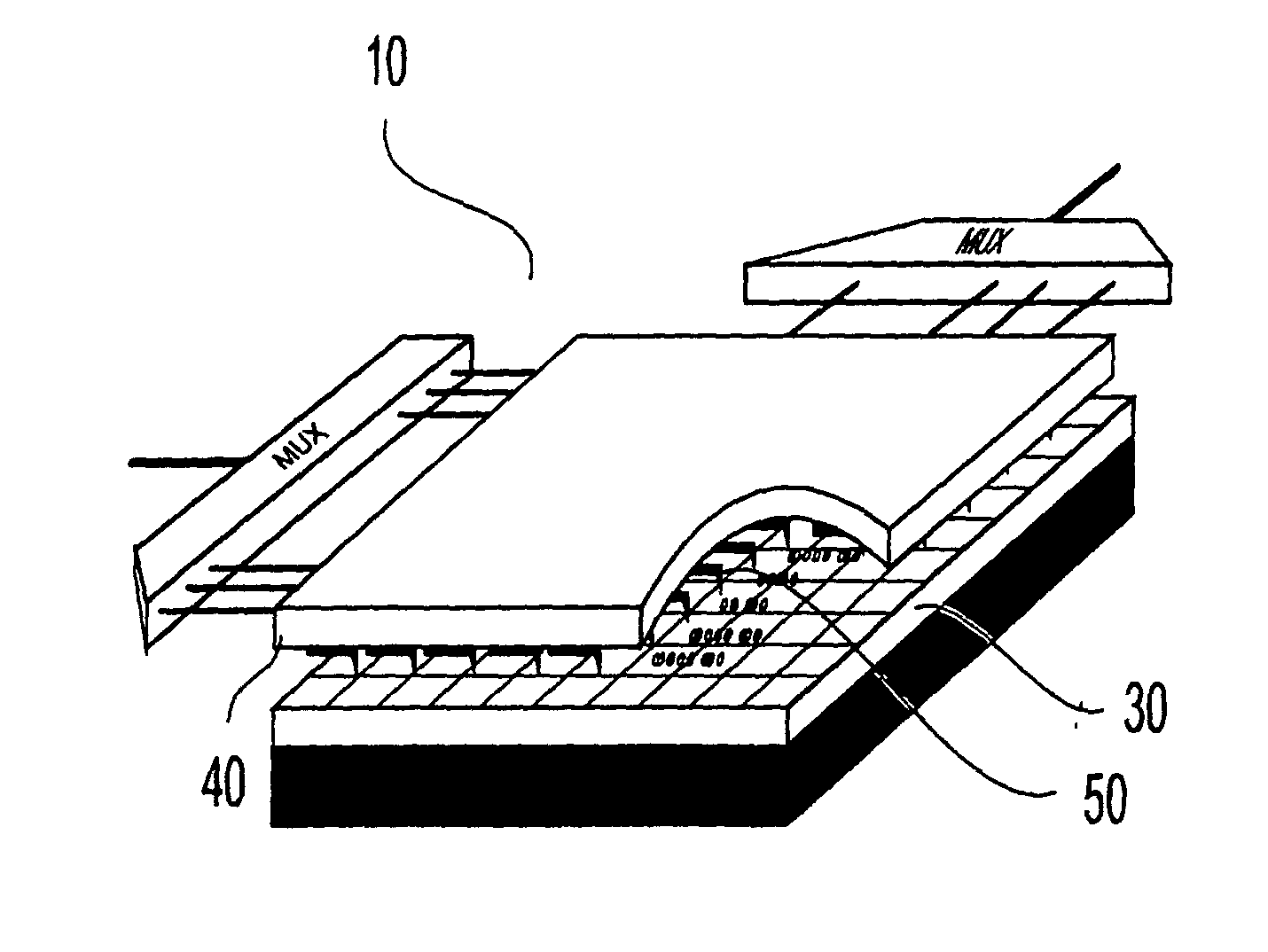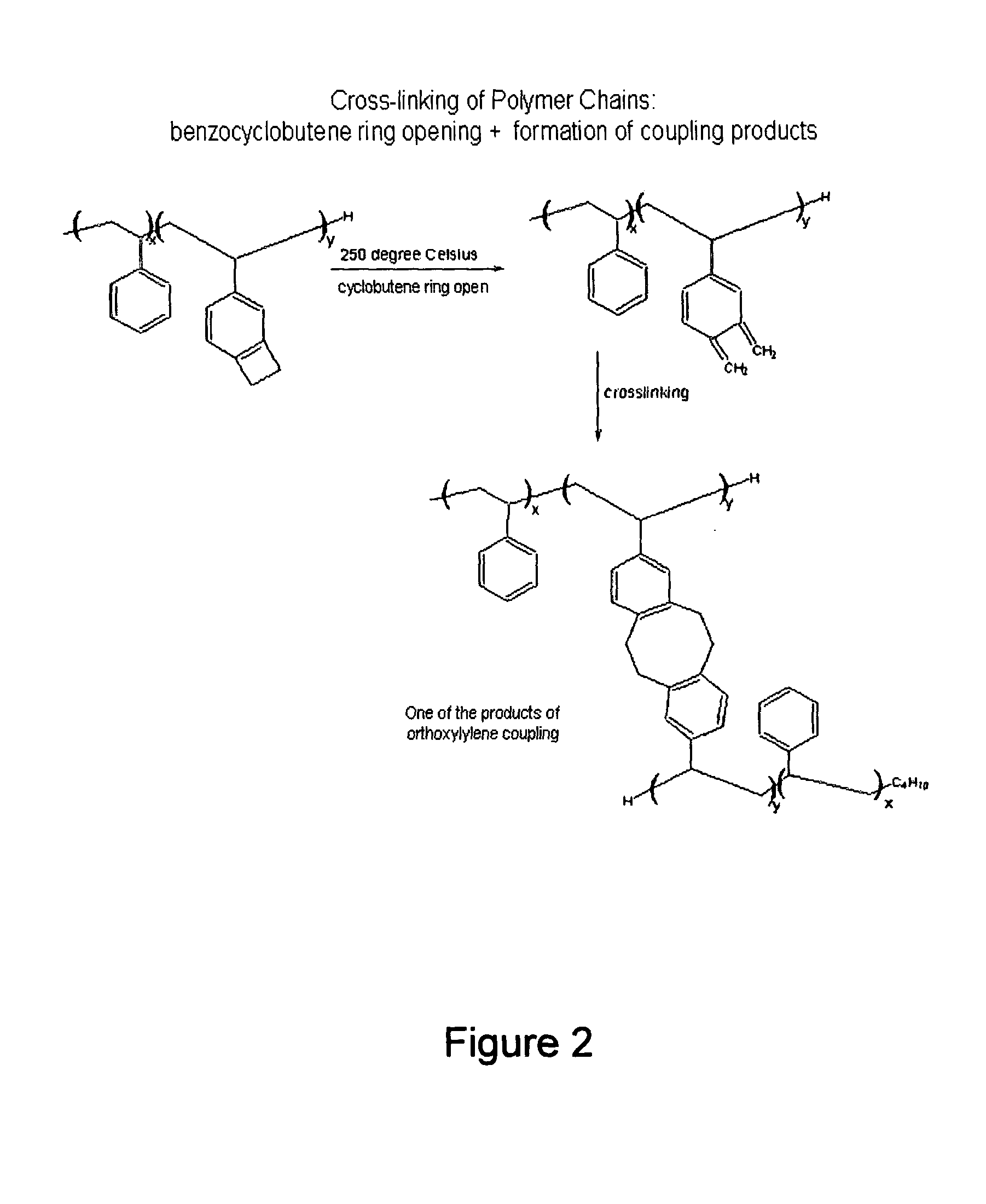High density data storage medium
a data storage medium and high density technology, applied in the field of data storage systems, can solve the problems of high melting point hard polymer, difficult to soften sufficiently, local softening of linear polymer, etc., and achieve the effect of improving the performance of thermomechanical storage devices, improving wear rate, and toughening the surfa
- Summary
- Abstract
- Description
- Claims
- Application Information
AI Technical Summary
Benefits of technology
Problems solved by technology
Method used
Image
Examples
examples
Experimental
[0056] Instrumentation.
[0057] Gel Permeation Chromatography (GPC) was performed on a Waters chromatograph (four Waters Styragel HR columns HR1, HR2, HR4, and HR5E in series) connected to a Waters 410 differential refractometer with THF as the eluant. Molecular weight standards were narrow polydispersity polystyrene standards. Ellipsometry was carried out on a Rudolph Auto-EI ellipsometer. Contact angle measurements were recorded on a VCA 2500 video contact angle system with a drop size of 1.00 μl. Electron micrographs were recorded on a Hitachi S-4700 Scanning Electron Microscope (SEM). AFM micrographs were recorded in tapping mode on a Nanoscope III from Digital Instruments. FTIR spectra were recorded in transmission mode on a Thermo Nicolet Nexus 670 FTIR spectrometer using double polished wedged silicon wafers.
[0058] Materials 3-Carboxaldehydebicyclo[4,2,0]octa-1,3,5-triene or 4-carboxaldehydebenzocyclobutene
[0059] To a 500 ml flask was added 50 ml dry of THF, Mg ...
PUM
 Login to View More
Login to View More Abstract
Description
Claims
Application Information
 Login to View More
Login to View More - R&D
- Intellectual Property
- Life Sciences
- Materials
- Tech Scout
- Unparalleled Data Quality
- Higher Quality Content
- 60% Fewer Hallucinations
Browse by: Latest US Patents, China's latest patents, Technical Efficacy Thesaurus, Application Domain, Technology Topic, Popular Technical Reports.
© 2025 PatSnap. All rights reserved.Legal|Privacy policy|Modern Slavery Act Transparency Statement|Sitemap|About US| Contact US: help@patsnap.com



